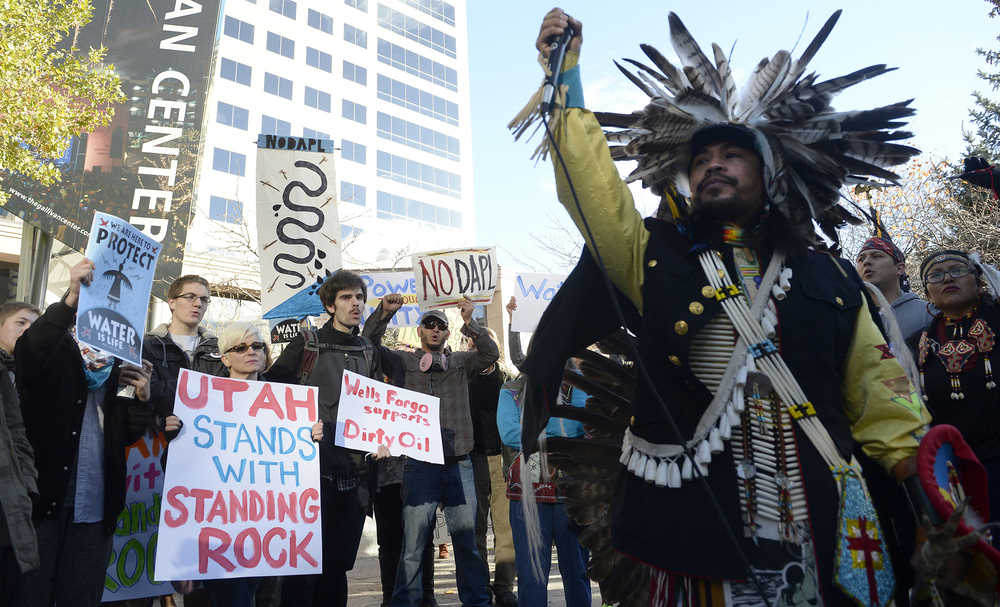BISMARCK, N.D. — Protesters at the demonstration against the Dakota Access pipeline are increasingly divided over how to stop the project, with militant younger activists seeking more aggressive tactics and an older crowd arguing for peaceful protest centered on prayer.
The differences came to a head last week after law enforcement officers in riot gear forced hundreds of protesters off an encampment on private property. In response, some demonstrators torched three vehicles on a bridge, creating a blockade that effectively cut off easy access to the pipeline construction zone and made it far harder for the Standing Rock Sioux tribe and nearby residents to get to Bismarck for errands and medical appointments.
Many other protesters insist that their cause cannot resort to law breaking, and they support the threat of eviction that the main camp has issued against people who would cause problems.
“We don’t want people instigating things that are going to get out of hand. We don’t need them,” said Don Cuny, chief of security for the large camp near the confluence of the Missouri and Cannonball rivers.
With the potential for more violence, tribal elders have asked that children be removed from the camp.
“They want the kids out of here if things get ugly,” said Emmett White Temple, a 55-year-old member of the Standing Rock Sioux.
A Denver woman was charged Monday with attempted murder by authorities who said she fired three shots at law officers during Thursday’s operation.
The sprawling encampment known as Oceti Sakowin, or Seven Council Fires camp, is on Army Corps of Engineers land. Within it are smaller camps occupied by protesters from across the U.S. and beyond. Residents are hesitant about singling out the group or groups that set the vehicles on fire, but they overwhelmingly point to a young crowd of campers.
For months now, opponents of the four-state, $3.8 billion pipeline have been camping in this area about 50 miles south of Bismarck. They worry the pipeline will disturb cultural artifacts and threaten drinking water sources on the Standing Rock Sioux’s nearby reservation and downstream.
The pipeline’s operator, Texas-based Energy Transfer Partners, insists the project is safe. The tribe is fighting the pipeline’s permitting process in federal court.
Tribal elders condemned the destruction of the vehicles, White Temple said.
“People were getting chewed out for the aggression,” he said of a meeting Sunday at the main protest camp.
“We have to keep on with prayer, but those people are still digging that pipeline,” he said. Others believe “violence gets action.”
Over the weekend, construction crews worked right next to the camp that authorities cleared Thursday, when they arrested more than 140 people.
Winter clothing, propane tanks, wood, tires, bottled water and other items belonging to the protesters lay next to heavy equipment. The vehicles set on fire were still smoldering Sunday as at least 10 dozen law enforcement vehicles and officers from different jurisdictions stood just beyond a cement barricade.
Cody Hall, a former spokesman for one of the encampment’s factions, said the entire camp must remain united to successfully fight the pipeline. He said the violence seen Thursday was “expected.”
“I’m not going to say anything bad about the fire being put up,” Hall said. “It happens and we are dealing with it.”

